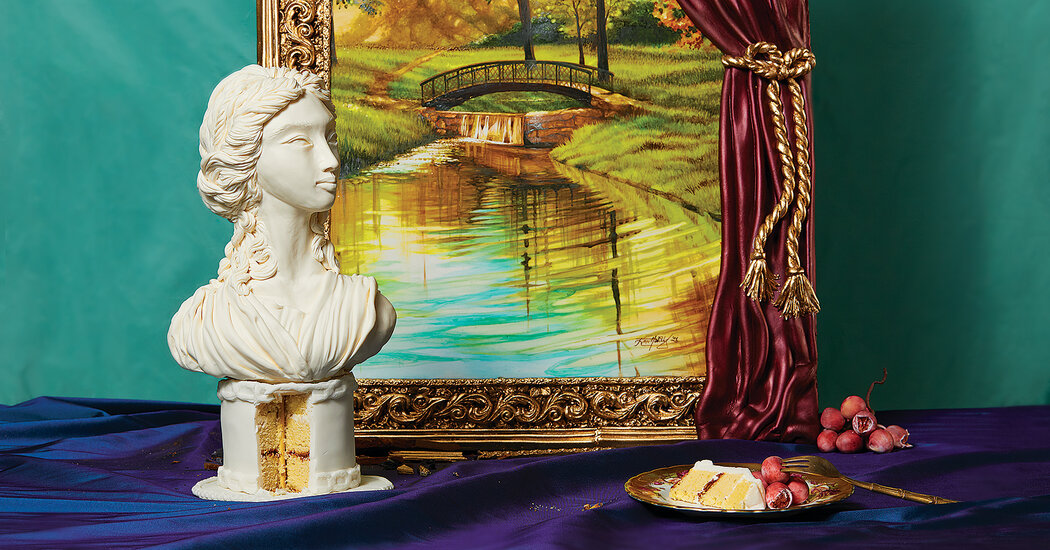
WHAT DO YOU FEED A KING, dulled to every luxury beyond want? In the city-state of Venice in 1574, the young Henry III, then king of Poland and en route to becoming king of France, was welcomed with a banquet, just another in the hundreds of his life. But when he reached for his napkin, it shattered, a handful of dust. The whole setup was fake — the drape of tablecloth, the platters and knives. All were molded out of a powdered sugar paste likely made with rose and orange blossom water and tragacanth, a resin from a plant indigenous to the Middle East and Asia: the yields of trade and Western expansion. A year before, Venice had ended a war with the Ottoman Empire by grudgingly ceding Cyprus, the site of its cane plantations, and the price of sugar was high. To waste so much of it was a show of power. It hardly mattered, then, that this was a feast of nothing, too sweet to eat. The pleasure lay in the surprise, the beautiful lie.
For centuries, the West has delighted in the treachery of food in disguise, from the intricate sotelties of the Middle Ages, presented to aristocrats between dinner courses — a pastry stag, say, with an arrow in its side, which when plucked let loose a gush of bloodlike claret — to the grand edible monuments and landscapes erected for public festivals in Italy in the 16th through 18th centuries, with swooping arches of bread and cheese crowned by suckling pigs and mock trees hung with fruit and haunches of game. Part of the entertainment was inviting the public to ransack the displays and scrabble for mouthfuls among the ruins, while nobles of the court applauded from afar: a literal hunger games. These fever dreams were meant to evoke the mythic Land of Cockaigne, a utopia that first entered European literature around the 13th century, where custard rained down from the sky, roofs were tiled in bacon and garlic-roasted geese and stewed larks, tasting of cloves and cinnamon, flew straight into your mouth — where no one, highborn or low, had to suffer to make a living to ease their hunger. It was a fantasy of abundance at a time when, for much of the population, food was no certainty. (Inevitably, a disapproving tone crept in, and by the 16th century, Cockaigne was a cautionary tale of gluttony and sloth.)
Centuries later, we’re still mesmerized by these little duplicities, the more so in our compulsively visual culture, where food is increasingly consumed without actual eating, experienced through a screen. Between or even in lieu of meals, we sate ourselves on the theater of ever-proliferating TV cooking shows while trawling Instagram for brightly staged still lifes of brimming-over burgers and neon macarons. This disembodiment was exacerbated during the pandemic, when many restaurants were forced to shut down and dining with anyone beyond immediate family — eating as occasion, as opposed to mere sustenance — all but ceased. What a happy distraction, then, when last summer, BuzzFeed’s Tasty shared a video on Twitter that opened on a close-up of a knife looming over a red Croc sandal with its bulbous toe box. There was barely a moment for the viewer to register the banality of the shoe before the knife, wielded by a black-gloved hand, cut it brusquely in half, revealing layers of yellow and pink cake.





